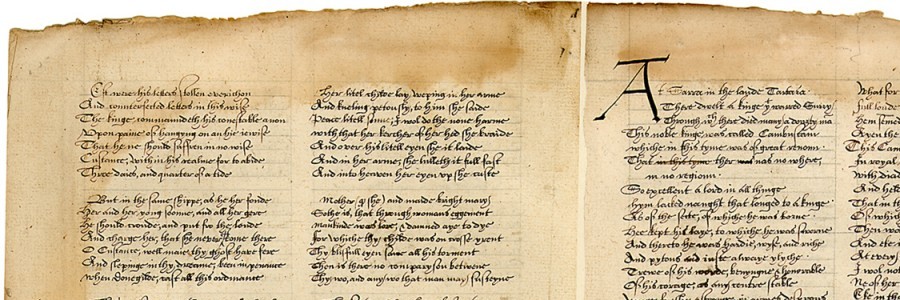Literature - Essays
Portraits and Self Portraits
Just like learning to play a musical instrument, drawing and painting, especially portraits, are not skills that one can learn from a book or even a classroom. We can get hints, clues, and constructive guidance from these, but ultimately the key is a lot of practice. It has been said that the typical professional in any field must put in at least 10,000 hours of practice before reaching the “outlier” status. Most work produced during practice is and should be trashed, and serious artists have no misgivings about regularly producing sellable art during practice. One can get lucky, but just as Confucius say “Man who does not include luck in his plan, is more likely to benefit from it.” Or perhaps the more modern version of this attributed to Monet, is that “The more one practices, the luckier one gets.” Only artists who rise to the level of Picasso or Dali, who could sell anything containing their signature, can sell everything they create. These buyers are more like collectors of signatures than collectors of art.
Drawing from photographs is a much easier skill to develop, especially with modern digital image technology, which provides anyone an affordable capability to project and trace any image. That is why many modern artists never develop the skill of drawing. The sophisticated buyer of art can usually tell when the work comes from a photograph, and buyers more often choose work painted from life even when they don’t know the difference. Work produced from life is almost always more artistic containing an indescribable spirit that comes from being on location, and almost always containing mistakes that tell a story of the artist that is not available in a photograph.
Since many artists strive to paint skillfully as well as artistically from life, they need a constant source of low cost models. The lowest in cost, of course, is one’s own self in a mirror, a model that is always present, does not need scheduling or negotiating, and has no excuse for being uncooperative. That is why artists do a lot of self portraits. Other low cost models include one’s own family and friends and fellow artists. In earlier times, to cut costs, artists used prostitutes during their off-duty hours.
When a colony of artists forms and hangs out together, they paint each other a lot, so we see a lot of portraits of artist friends. Most of those also get trashed as well, although it is fairly common for artists to exchange portraits, especially when they turn out reasonably good. In a few cases, one artist’s interpretation of another becomes so good that a commission is in order, or even sellable inventory results.
Occasionally, when the model fails to show up for a group of artists, the artists themselves volunteer to sit or to take turns sitting. Finally, when artists paint in a circle around a model, or paint a model sitting before a mirror, they often incorporate the artists sitting in the background if it interests them.
At some point, I began to save some of the portraits of me that artist friends produced and were willing to give (or in a very few cases, sell). In a few cases I liked what I saw so much I commissioned the artist to do a special portrait. I now have some from each category above. Each one has a special story to go with it. Here I include portraits and self portraits with a few accompanying stories.
In The Zone
On a warm Tuesday evening in our Laguna Beach studio, twenty artists sat in a circle around one our most gorgeous, undraped models. Most of the work created this evening would (or should) complete its mission in the trash bin. Why? Because Tuesday evenings are for practice, not for creating art, and most work is graphite or charcoal on paper. This is the equivalent of a trumpet player running up and down the musical scales.
Sitting immediately across from me this evening was Fred Hope, founder and president of the association. I am usually not conscious of the other artists in the room when I am “in the zone”, not even the one immediately across from me, and I wouldn’t have noticed Fred, except he usually sits at the office computer on Tuesday evenings handling association business. Fred is a well-known Laguna Beach artist, who put in his 10,000 hours of drawing practice years ago; he does this 24/7 for a living, and can draw circles around most of the people in the room.
Seeing him there reaffirmed my belief that one should never stop Also, I figured, “well, even after I’ve put in my 10,000 hours, I will never tire of drawing a beautiful model, so, Fred probably hasn’t either.” The thought gave me some reassurance that I would always get pleasure from drawing.
During the break, Fred approached me, handed me the sheet of paper he had been working on, and said, “ I’m outa here. Can you lock up?” The sheet of paper contained a beautiful, delightful charcoal portrait of me, working away, captured in the zone, with no indication of the subject that had me so captivated except maybe for the expression he had captured on my face.
As the model approached the stand for her last pose and as the door closed behind Fred, I turned his work for the other artists to see and announced. “I have just had the greatest compliment I can imagine paid to me by Fred. With such a beautiful model posing for him with me in the background, Fred chose to draw me.”

Through the Looking Glass
I had been exploring figures in reflection and with the help of Fred Hope, designed and assembled a large corner cube mirror set that would produce three or four reflections of a model, depending on how it was set up. It had many possibilities, including painting multiple reflections of the model and some of the artists in the studio as well. By taking the right position, one could even do a self portrait behind the model.
Fred often painted the model and the painters in the studio, and since I liked his drawing, “In the Zone”, I asked him if he would do a portrait of me painting the model in the corner cube. He accepted the challenge and produced “Reflections of a Painter”.

Reflections of a Painter, 18x24, oil on canvas, by Fred Hope
He took the commission very serious and worked on it for weeks using sketches he had made from life during various related sessions and photographs I had taken during the actual painting session with the model, Roxanne Abel. To a certain extent he was superimposing an image of me painting a similar pose in a different session.
In the early stages of the painting, he captured me standing, but he was not happy with the particular composition so he changed it to a sitting pose, since I had painted in both positions.

Reflections of a Painter, the earlier painting, which lies underneath the final painting.
It is easy to see why the final composition is superior to the earlier one. In the final version, the eye of the viewer is guided from the palette along my figure and into the image within the mirror, while in the earlier version, the eye of the viewer is lead off the canvas before encircling the image in the mirror.
Little Artist on the Train to Flitwick
This is one of my favorite portraits, so much so that I wrote a separate story about it that follows here.
On trains and planes I often draw the people. Pauline becomes a bit nervous with this practice and discourages it, fearing that I may get “caught” invading someone’s privacy. To lessen the tension she humors me by allowing me to draw her, so I have made many sketches of her during our travels together. She probably hasn’t figured out yet that this is just one of my ploys to get her agreement to be my model.
I have been caught a few times but have never experienced any major objections from my unknowing models. A few of these times brought on surprises and even a good laugh. In the summer of 2009 Pauline and I took the train from London back to our village, Flitwick, after an afternoon of theatre. The trip, which takes less than an hour, goes a lot faster when I find someone interesting to sketch.
Seeing me observe an interesting family sitting across the aisle to the right, Pauline, reading my mind, gave me a suspicious look, even before the sketchbook emerged and said “No!” To comply with her wishes I began to sketch her. As I progressed, a little girl facing me from a few seats down on the opposite hand side of the train began to show extra interest in what I was doing. Soon she left her seat and walked past me to see that I was sketching Pauline.
When she returned to her seat, I could see that she, herself, was up to something as she worked away at a piece of paper with a hand full of pencils. A young friend, about the same age, who was with her, began also to look at me and laugh. With that signal I took a risk and assumed I could get away with drawing the little girl in the 15 or 20 remaining minutes of the trip.
By the time we reached Harlington, the last stop before Flitwick, the family and the little girl were clearly having a good time in some way that involved me. I wasn’t sure I would ever know how when the family collected their bags to leave the train at Harlington.
As she passed me, the little girl proudly handed me a small piece of paper containing her portrait of me. “I love it! Can I keep it?” I asked with a show of enthusiasm. She seemed as delighted by my request as I was to have it granted. So then I showed her my sketch of her, which fortunately, both she and her mother liked. Further communication was halted by the door closing warning signal and they rushed to leave the train.
Such nice interactions with strangers add a lot of happiness to my life. The only problem is that she failed to sign her portrait of me. So I may never know who is this future Mary Cassatt from Harlington.

Portrait of James Trolinger, produced by an unknown Artist, Little Artist on the Train to Flitwick.
Nude with Jim in the Background
An artist rarely knows when he is being painted in the background of another artist’s work. I was delighted when Morina Pavlov, a Laguna Canyon Artist, offered to give me this piece if I would replace the canvas. I purchased a packet of five high quality canvases and gladly gave them to Morina.

Nude with Jim in the Background, 10x12, oil on canvas, by Morina Pavlov
A Conversation in Italy
Artist Timothy Clark has a following of artists, most of which are outstanding artists themselves. In the five plus trips I have taken so far with this group, plus a few years taken classes under Tim, I met and painted with some outstanding artists and became close friends with many of them. One of the best is New York artist, Ruth Baderian, fondly known as “Bad Ruth” to distinguish her from two other Ruth’s in the group.


Number 1 & Number 2
Conversation in Italy, oil on canvas, by Ruth Baderian.
Like all groups, subgroups often form where friendships move to higher levels when we get closer to the people that we just seem to harmonize with. Ruth is such a friend. Indeed, I have learned and borrowed a lot from her art, and she has never been possessive of her skills and tricks.
Often after a long day of painting, the subgroups end the day by sitting together over a glass of wine or beer (or two) and discuss anything that captures our interest. We always promise to stay in touch and meet again soon, but it rarely happens. We take a lot of photographs of each other. During a painting trip to Italy Ruth took several pictures of Terry Rooney and me sitting across the table during one of our evening discussion sessions. She liked some of the photos so well that she turned them into paintings. After Ruth showed me the above two paintings I fell in love with number two and asked her to give me the first option on the painting. In the summer of 2010 she entered it in a show and told me the price, which was considerably higher than what I normally spend on art. I responded by making her an offer, which was somewhat lower. To my pleasant surprise, she responded by saying that she really wanted me to have to painting and would accept my offer. I was elated. She had entered the painting in a show and was anticipating through the comments of various people that the painting may receive and award, so she would send it to me as soon as the show ended.
In the fall, after not hearing from Ruth, I received the sad news that Ruth had passed away after an operation.
Jim in Watercolor

Jim in Watercolor15x22, watercolor on paper, by Renuka Pilau
Renuka Pilau is a member of the Southern California Artists Association, and she was a regular at the workshops in Laguna Beach, where we met and became friends. At the time we met, she was a highly skilled oil painter.
I was one of a few painters in the workshops using watercolor regularly and she ask me if she could watch me paint, since she wanted to do more work in watercolor. Being somewhat flattered, I told her that I would be happy to help her in any way I could. However, since I felt that I, myself, was still pretty much in an experimental and learning stage, I was not sure how much she could learn from me, so I suggested that she also take one of Tim Clark’s workshops in portrait painting, She watched me work on several occasions, photographing my work as it progressed through each stage, asking questions, and taking notes. She also took one of Tim’s weekend workshops. One thing she could get from me that Tim did not allow in his portrait workshops was photography of each of the steps.
After she started working in watercolor she asked me to critique her work, which I did. In return she offered me suggestions and encouragement in my own paintings. She was extremely hard on herself and sometimes I found myself rescuing what I thought to be a great piece of work that had disappointed her.
Some of these were portraits that she had done, including a few from photographs. At first, when her paintings were not exact duplicates of the photograph, she felt that the painting was a failure. Finally, I convinced her that if the painting added nothing to the photograph, then it really was a failure. Some of her paintings clearly added character that did not come across in the photograph.
During this phase she painted this portrait of me and gave it to me out of gratitude for “teaching her” watercolor.
The Laguna Plain Air Painters Association, LaPAPA, was the first organization that I joined when I returned to painting in the early 1990’s. Eventually, the studio it was running fell on hard times and became somewhat disorganized. As often as not, the model would fail to show. Sometimes we just cancelled the session, sometimes one of us volunteered to model and sometimes we took turns. In one of the sessions the following two paintings of me were done by fellow artists, Linda Banks and Karen Shaw.

Jim Modeling, 8x10, Gwash on paper, by Karen Shaw

Jim Modeling, 8x10, Pen and ink on paper, by Linda Banks
Plein Air Painting
When artists paint in the field on location, they often include other artists in paintings or make sketches either to use later for reference or just for practice. Sometimes the artists exchange such sketches. Here are two sketches completed by fellow plein air painters on a 2011 trip though Italy and Austria.
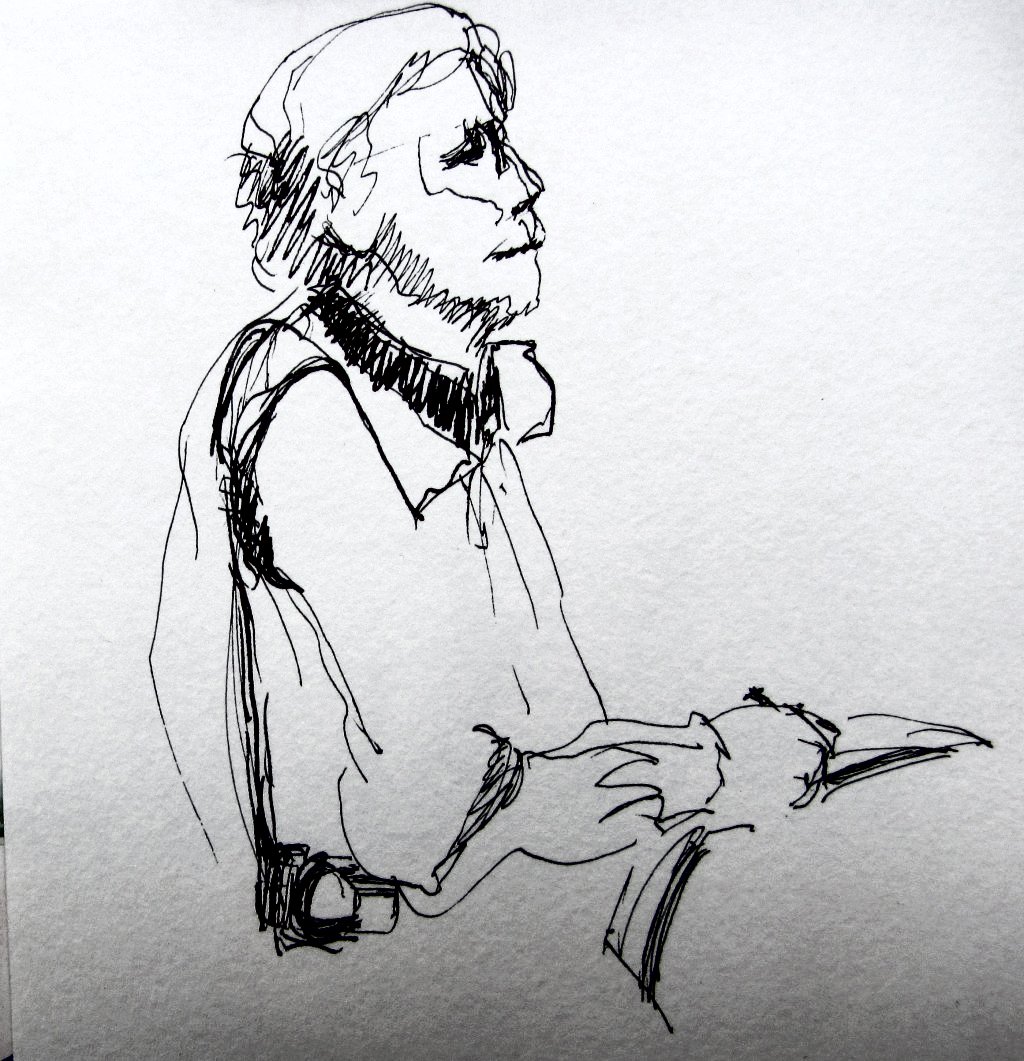
Jim Sketching in Austria-by Ruth Westfall
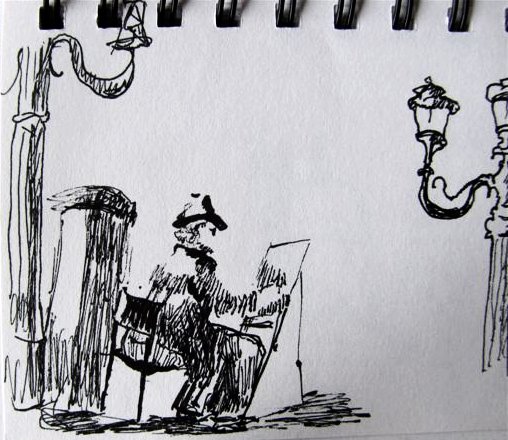
Jim Painting in Venice-By Marianne Flynn
On several occasions, we hired a cartoonist to entertain at parties. The next sketch of Pauline and I was done at the MetroLaser 19th anniversary party at our home. It appears the artist could tell we were so much in love.

The following sketch was done by an artist at a hoot nanny held in Houston, Texas, during an annual meeting of the Aeroballistics Range Association.

Self Portraits
The following are several of the many self portraits I did over the years mostly for practice. Somewhat to my surprise, a number of people wanted some of the self portraits enough to make the required donation to cancer research. I have been so blessed with models to paint from, I haven't done a self portrait in several years, so I will add a few more up to date here in the near future.

Self Portrait, 18x24, Oil on Canvas, Currently in a private collection

Self Portrait, 24x36, oil on canvas, private collection

Self Portrait, 15x22, oil pastel on paper, private collection

Self Portrait, 15x22, oil pastel on paper, private collection

Self portrait, 18x24, charcoal on paper
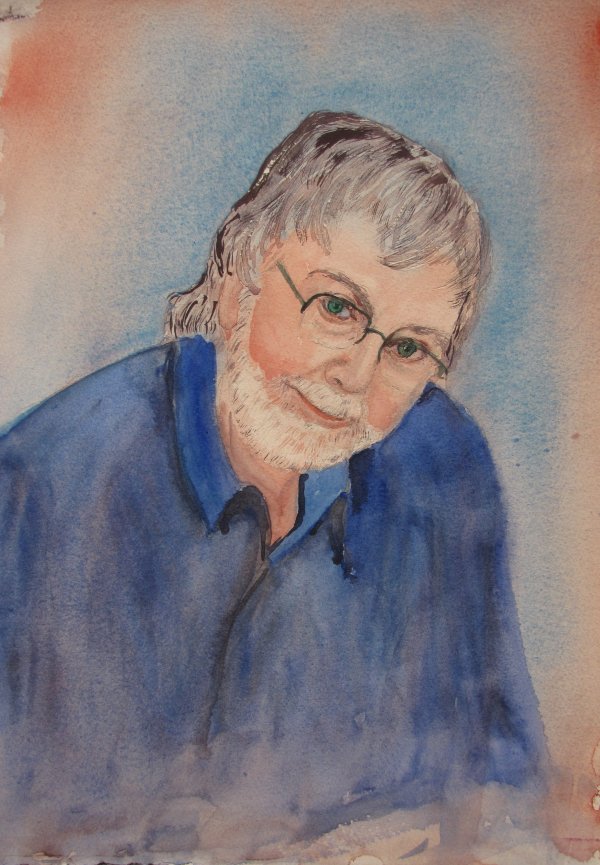
Self Portrait, 15x22, Watercolor on paper

Self Portrait, 15x22, Pastel on paper
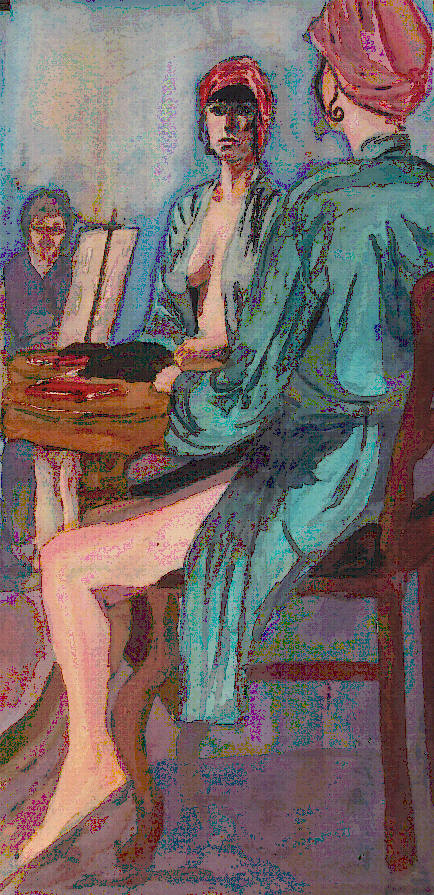
12x22 watercolor on paper, painted from the model in the mirrors series with artist seen in the background
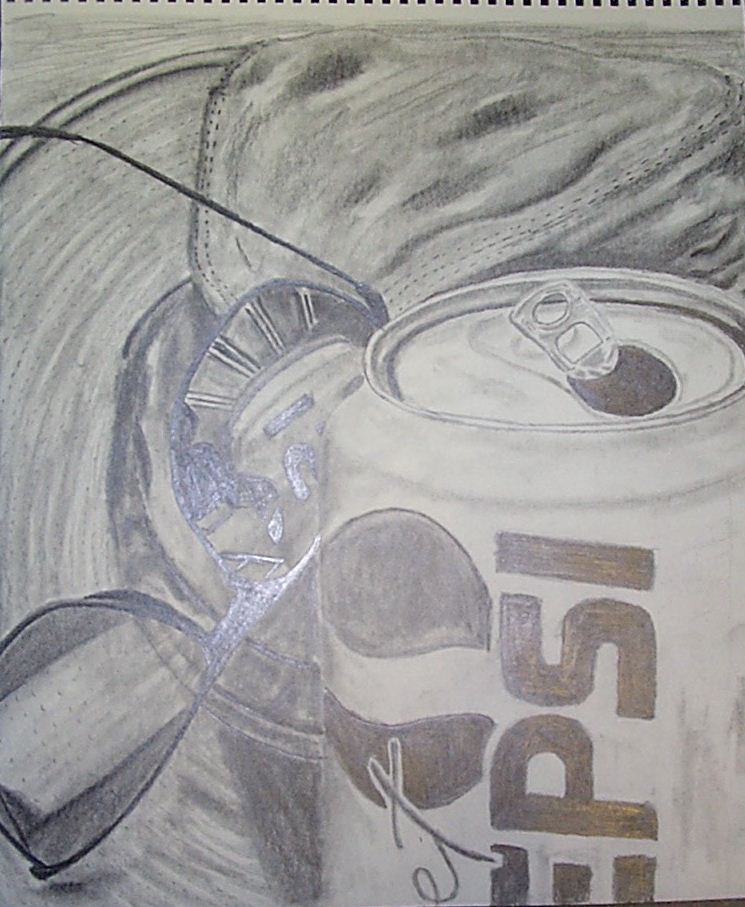
PEPSI with Sunglasses, 18x24, pencil on paper. The artist is seen in the reflection in the sunglasses at 10 o'clock.. The white stripes in the sunglass reflection are the fluorescent lights in the ceiling of the room.

